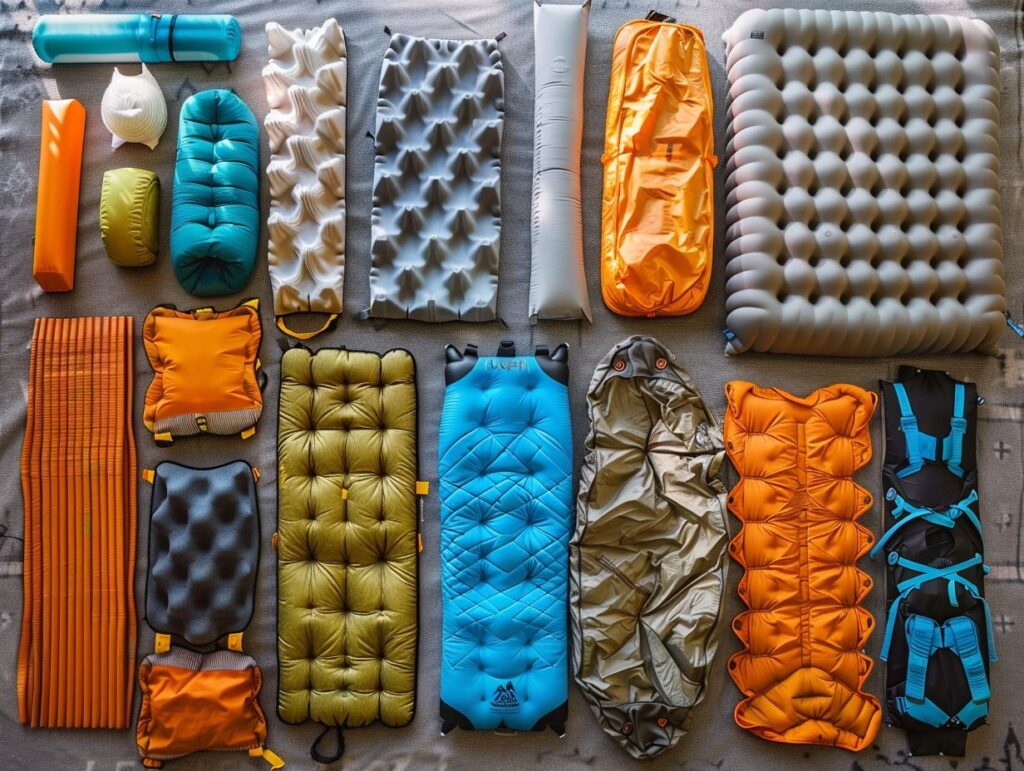Getting a good night’s sleep while camping is essential for a successful outdoor adventure. One key factor in achieving this is choosing the right sleeping pad.
We will explore the different types of sleeping pads available – from air pads to foam pads, factors to consider when selecting a sleeping pad such as insulation and durability, tips on how to choose the right sleeping pad for your needs, and advice on maintaining and extending the lifespan of your sleeping pad.
Ensure you have a comfortable and restful night under the stars by choosing the right sleeping pad.
Key Takeaways:
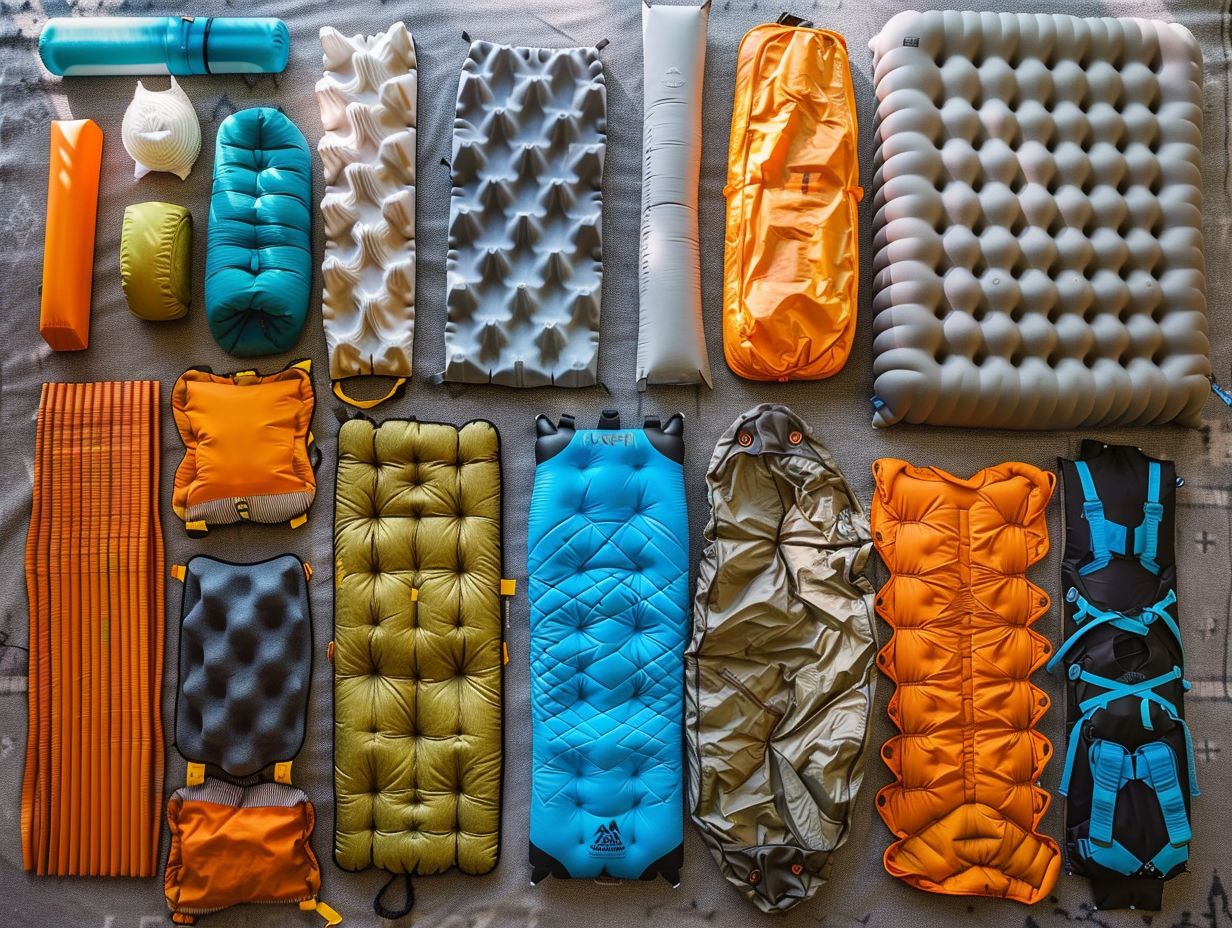
- Choose a sleeping pad based on your personal needs and preferences, such as sleeping style, climate, and budget.
- Consider factors such as insulation, comfort, size and weight, durability, and price when selecting a sleeping pad.
- Proper maintenance, such as proper inflation and storage, can extend the lifespan of your sleeping pad.
Types of Sleeping Pads
Sleeping mats constitute essential equipment for backpacking and camping endeavours, as they provide comfort and warmth by creating an insulated barrier between the user and the ground.
The origins of sleeping mats trace back to the formative period of outdoor exploration, during which distinguished backpacker John Muir frequently resorted to the improvisation of natural elements such as pine cones and grass clumps to enhance insulation.
1. Air Pads
Air pads, such as the NeoAir XLite and NeoAir XTherm, have garnered popularity among backpackers due to their exceptional insulation properties and compact design. These pads have been intricately engineered to offer superior thermal insulation, enabling users to remain warm and comfortable during cold nights in outdoor settings.
The NeoAir XLite and NeoAir XTherm are esteemed for their lightweight composition, facilitating effortless transportation within one’s rucksack without unnecessary bulk.
Their compressible nature allows for easy rolling up or packing down to a condensed size, conserving valuable storage space for other essential equipment in the rucksack. Distinguished by their innovative construction, these air pads ensure a restful night’s sleep even on challenging terrains.
2. Self-Inflating Pads
The innovation of self-inflating mats, originally introduced by Cascade Designs through their Therm-a-Rest brand, offers camping enthusiasts a combination of comfort and convenience. These pioneering mats incorporate a blend of open-cell foam and self-inflating technology to deliver a supportive yet cushioned surface, ensuring a restful night’s sleep in outdoor settings.
Setting up camp with these mats is a straightforward process – users simply need to unroll the mat, open the valve, and observe as it autonomously expands and fills with air. This intuitive design eliminates the requirement for manual inflation, presenting a time-efficient and user-friendly option suitable for campers of varying experience levels.
3. Foam Pads
Closed-cell foam pads, specifically closed-cell foam pads, are recognised for their durability, lightweight characteristics, and compact packing dimensions. This type of foam pad is engineered to exhibit exceptional resilience, rendering it well-suited for demanding outdoor pursuits.
Owing to their closed-cell configuration, these pads demonstrate reduced moisture absorption properties, ensuring heightened defence against damp conditions.
Along with their robustness, closed-cell foam pads are lauded for their remarkably low weight, facilitating easy portability for hikers and campers who can conveniently accommodate them in their rucksacks without incurring unnecessary bulk.
Further enhancing their appeal is their compact pack size, simplifying storage when not in use and optimising spatial efficiency during travel.
How to Choose the Right Sleeping Pad for Your Needs?
Selecting the appropriate sleeping mat necessitates the consideration of individual requirements, encompassing one’s preferred sleeping style, the climatic and topographical conditions of the camping location, as well as budgetary constraints. Before acquisition, conducting a thorough evaluation of the sleeping mat can substantiate its alignment with one’s specific needs.
1. Consider Your Sleeping Style
The preferred sleeping position, whether one is a side, back, or front sleeper, significantly influences the selection of an appropriate sleeping mat.
Side sleepers typically favour softer sleeping mats that offer sufficient cushioning and allow the hips and shoulders to comfortably sink in. It is advisable to consider memory foam or plush pillow-top options as they provide optimal pressure relief.
Back sleepers, on the other hand, may prefer a medium-firm sleeping mat with effective lumbar support to maintain proper spinal alignment. Materials such as latex or hybrid mattresses can offer the necessary balance between support and comfort.
For front sleepers, firmer sleeping mats are often recommended to prevent excessive arching of the lower back. It is advisable to select a supportive mattress that promotes proper body alignment during sleep.
2. Think About the Climate and Terrain of Your Camping Destination
The selection of a suitable sleeping mat for camping should be informed by the climate and terrain of the destination, with considerations such as insulation and R Value playing a pivotal role, particularly in colder settings.
For example, when camping in a snowy mountain region, opting for a sleeping mat with a high R Value becomes essential to prevent the loss of heat to the ground and ensure a restful night’s sleep.
Conversely, in hot and humid environments, placing emphasis on the breathability and moisture-wicking capabilities of the sleeping mat can contribute to maintaining a cool and comfortable sleeping experience.
It is imperative to tailor the choice of sleeping mat to the specific environmental conditions anticipated during outdoor excursions to enhance overall comfort and enjoyment.
3. Determine Your Budget
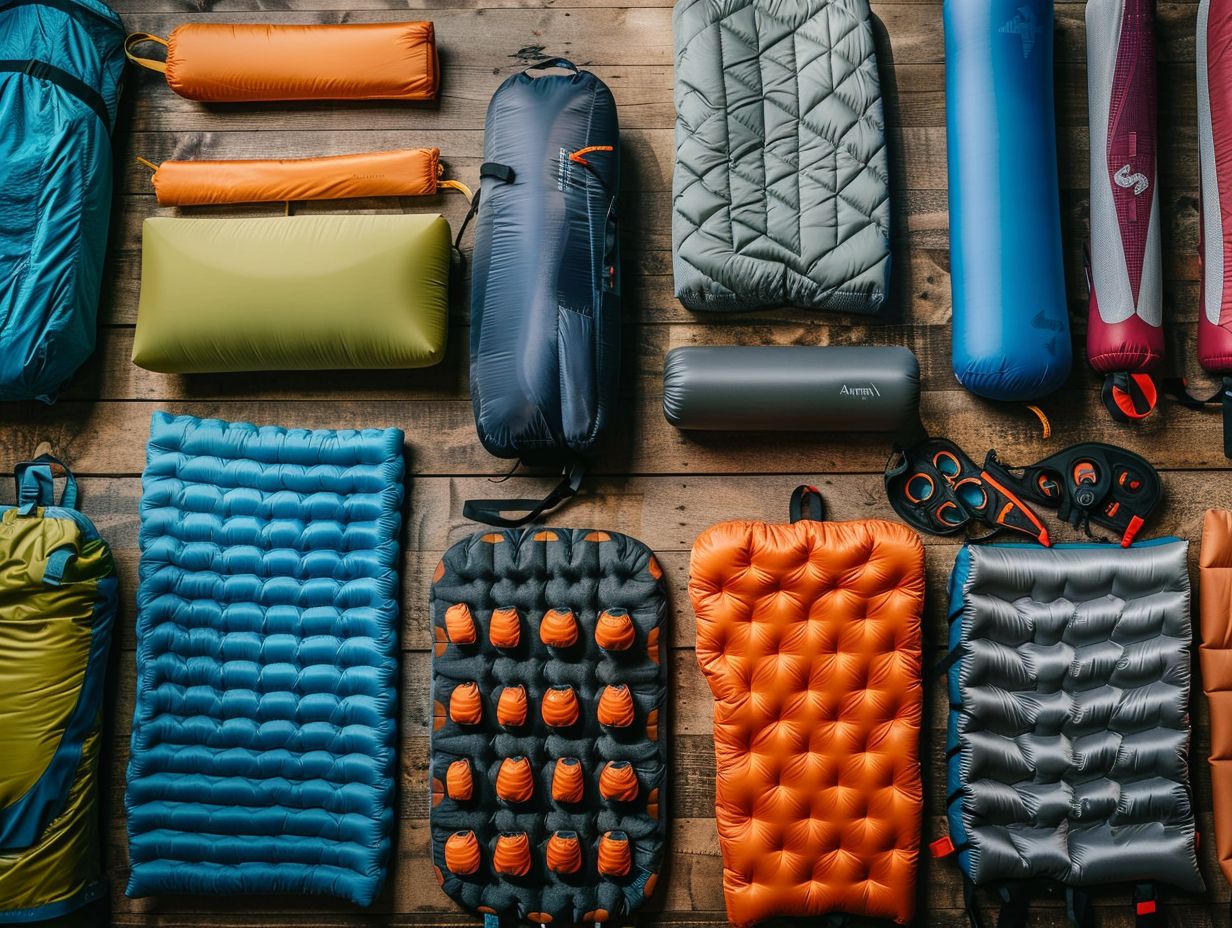
It is imperative to establish a budget when considering sleeping mats, as there is a wide range of pricing and quality options available. When encountering financial constraints, it is vital to strike a balance between cost and quality.
While selecting the least expensive sleeping mat may lead to immediate cost savings, it could ultimately result in discomfort and decreased durability. To ensure good value for your investment, it is advisable to assess factors such as material quality, insulation, weight, and comfort features.
Conducting thorough research by reviewing feedback and comparing prices across various vendors can assist in identifying a high-quality sleeping mat that aligns with your budget.
It is worth noting that allocating additional funds towards a durable and comfortable sleeping mat can significantly enhance your outdoor experience and provide lasting benefits across multiple adventures.
4. Test Out the Sleeping Pad Before Purchasing
It is imperative to test a sleeping mat before making a purchase to ascertain its ability to deliver the desired comfort and suitability. During the evaluation of a sleeping mat, it is essential to focus on its ability to cushion the body adequately and offer support to the back.
Various sleeping positions should be explored to determine the mat’s consistency in providing support throughout the night. Stability is another crucial factor to consider, as a shifting mat can disturb sleep patterns.
Additionally, the size and weight of the mat must align with the intended use to ensure optimal functionality. By assessing these variables in advance, individuals can make well-informed decisions and acquire a sleeping mat that improves their overall quality of sleep.
Factors to Consider When Choosing a Sleeping Pad
Selecting the appropriate sleeping mat requires an evaluation of various factors such as insulation, comfort, support, dimensions, weight, durability, and cost. The R Value acts as a crucial metric that indicates the mat’s insulation ability.
1. Insulation
Insulation stands as a primary consideration in the selection of a sleeping mat, with the R Value serving as a metric for warmth and thermal resistance. Understanding the R Value is paramount as it signifies the sleeping mat’s capacity to insulate the body from the cold ground. A higher R Value denotes superior insulation and heat retention, rendering it suitable for cold weather camping.
Various insulation technologies, such as synthetic fibres, down feathers, or foam, present distinct advantages. Synthetic insulations typically offer cost-effective solutions and perform admirably in humid conditions, whereas down feathers boast an exceptional warmth-to-weight ratio.
Foam insulation exhibits durability and consistent insulation across the entirety of the sleeping mat. Each insulation technology caters to unique preferences and requirements, ensuring a restful night’s sleep during outdoor escapades.
2. Comfort and Support
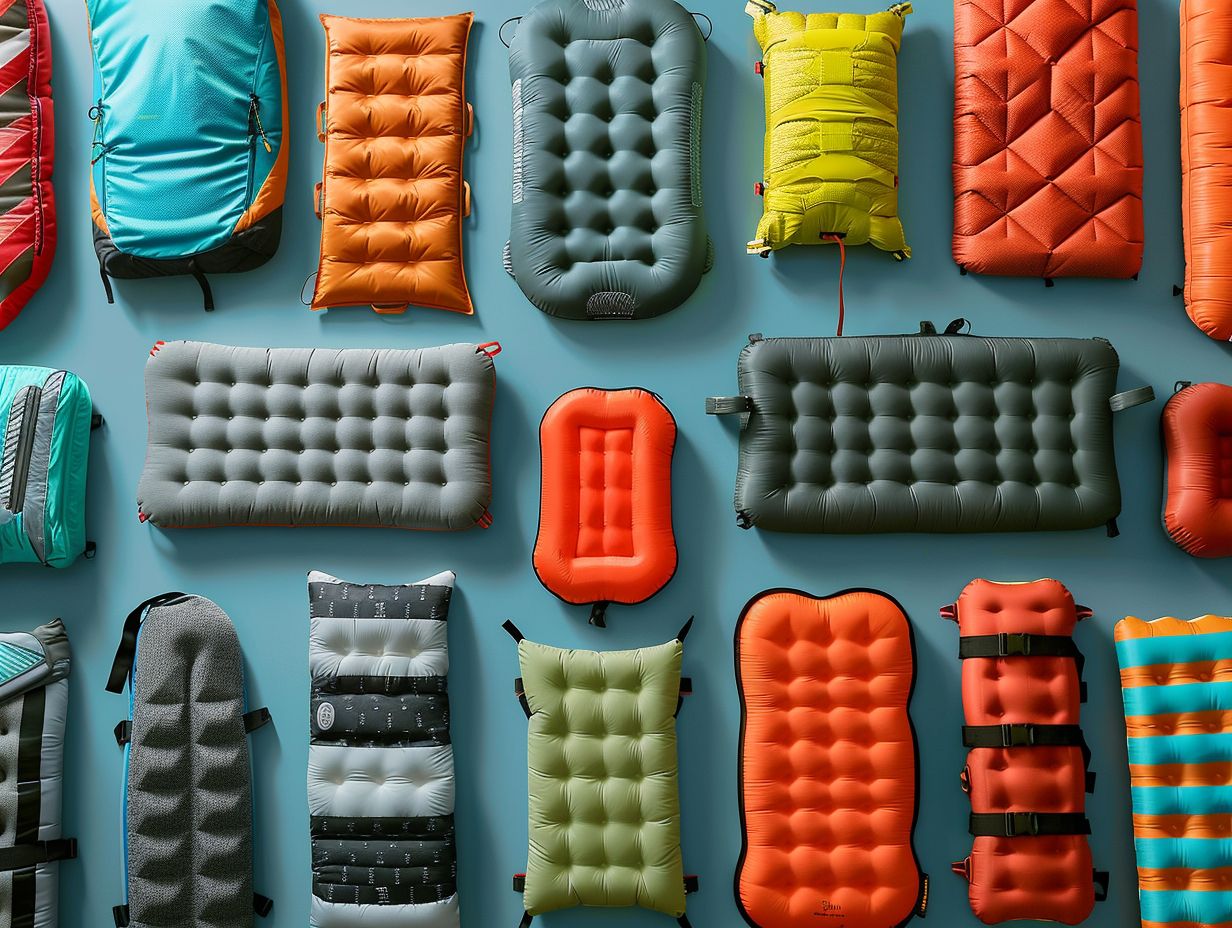
Comfort and support play a crucial role in facilitating a restful night’s sleep, with air pads and self-inflating pads often demonstrating superior performance in these essential aspects.
Air pads stand out for their adjustable firmness, offering users the flexibility to tailor the level of support to their individual preferences. In contrast, self-inflating pads present a combination of user-friendly setup and enhanced comfort through additional cushioning.
Both varieties excel in establishing a protective layer between the sleeper and the ground, effectively minimising pressure points and promoting a deeper and more rejuvenating sleep experience.
When making a choice regarding a sleeping pad, it is advisable to take into account considerations such as insulation capabilities, thickness, and material composition. These factors can significantly contribute to enhancing overall comfort and relaxation levels during outdoor excursions.
3. Size and Weight
The dimensions and weight of a sleeping mat are crucial considerations, particularly for backpacking, where the efficiency of pack size holds utmost importance.
The compactness of a sleeping mat plays a direct role in the available space within your rucksack for other essential equipment. A lightweight sleeping mat can significantly impact the overall weight you must bear during extended hiking excursions.
In the realm of backpacking, each ounce carries weight, and selecting a lightweight and condensed sleeping mat can help conserve energy and reduce strain on your physical well-being.
A smaller sleeping mat not only alleviates the burden of carriage but also simplifies the packing process, facilitating efficient organisation of gear as you prepare for your outdoor ventures.
4. Durability
Durability plays a pivotal role in the selection process, with foam pads generally exhibiting superior resilience in comparison to self-inflating pads.
Foam pads are esteemed for their capacity to endure wear and tear over an extended period owing to their robust construction and high-quality materials. The dense foam material utilised in these pads offers exceptional support and maintains its shape without succumbing to compression.
Conversely, self-inflating pads commonly incorporate air chambers that are susceptible to punctures or leaks, compromising their long-term durability.
In evaluating the longevity of sleeping pads, it is imperative to also assess the composition of the outer fabric. Utilising sturdy materials such as ripstop nylon or polyester can bolster resistance against abrasions and tears, thereby prolonging the lifespan of the pad.
5. Price
The cost is a significant factor for many campers when selecting sleeping mats, as there is a range of options available to suit different budgets. These options span from economical mats found in retailers like Asda to high-end models that are comparable in price to Nalgene gear.
In the realm of sleeping mats, the price you are willing to pay can notably affect the quality and features you can expect to receive. Budget-friendly sleeping mats cater to occasional campers or individuals with financial constraints, providing fundamental comfort and insulation.
Conversely, premium sleeping mats boast advanced materials, innovative designs, and superior comfort. Similar to the choice between a standard water bottle and investing in a durable Nalgene, the decision between a budget-friendly or premium sleeping mat is influenced by the frequency of camping trips and the level of comfort one prioritises.
Frequently Asked Questions
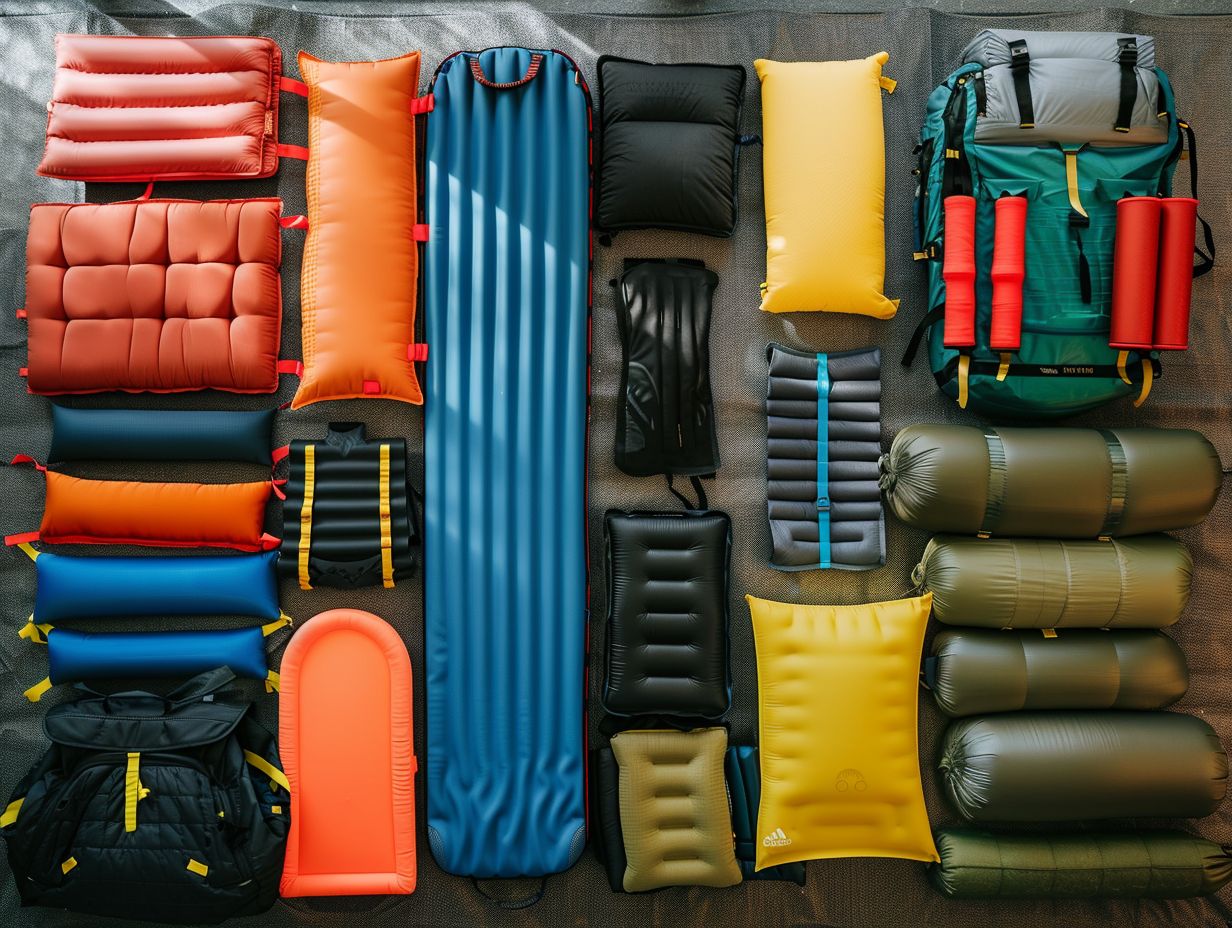
What factors should I consider when choosing the right sleeping pad for my camping needs?
When choosing a sleeping pad for camping, it’s important to consider factors such as size, weight, comfort, durability, and insulation. These factors will help determine which type of sleeping pad will best suit your needs and preferences.
What types of sleeping pads are available for camping?
There are several types of sleeping pads available for camping, including air pads, self-inflating pads, closed-cell foam pads, and hybrid pads. Each type offers different benefits and features, so it’s important to consider your own needs and preferences when choosing the right one for your camping needs.
Are there any specific features I should look for in a sleeping pad for camping?
Yes, there are some key features to look for when choosing a sleeping pad for camping. These include the pad’s thickness, R-value (insulation rating), material and construction, packability, and ease of inflation.
Do I need to choose a sleeping pad based on the type of camping I will be doing?
Yes, the type of camping you will be doing can affect the type of sleeping pad you choose. For example, if you will be backpacking, you may want a lightweight and compact sleeping pad, while car camping may allow for a larger and more comfortable pad.
Can I use the same sleeping pad for all types of weather and temperatures?
Not necessarily. Some sleeping pads are designed specifically for cold weather camping and have a higher R-value for better insulation. It’s important to choose a sleeping pad with the appropriate R-value for the temperatures you will be camping in.
How do I know if a sleeping pad is the right fit for me?
The best way to know if a sleeping pad is the right fit for you is to try it out. If possible, test out different types of sleeping pads before purchasing to see which one is most comfortable and suitable for your needs. Additionally, reading reviews and considering the features mentioned above can also help narrow down your options.

